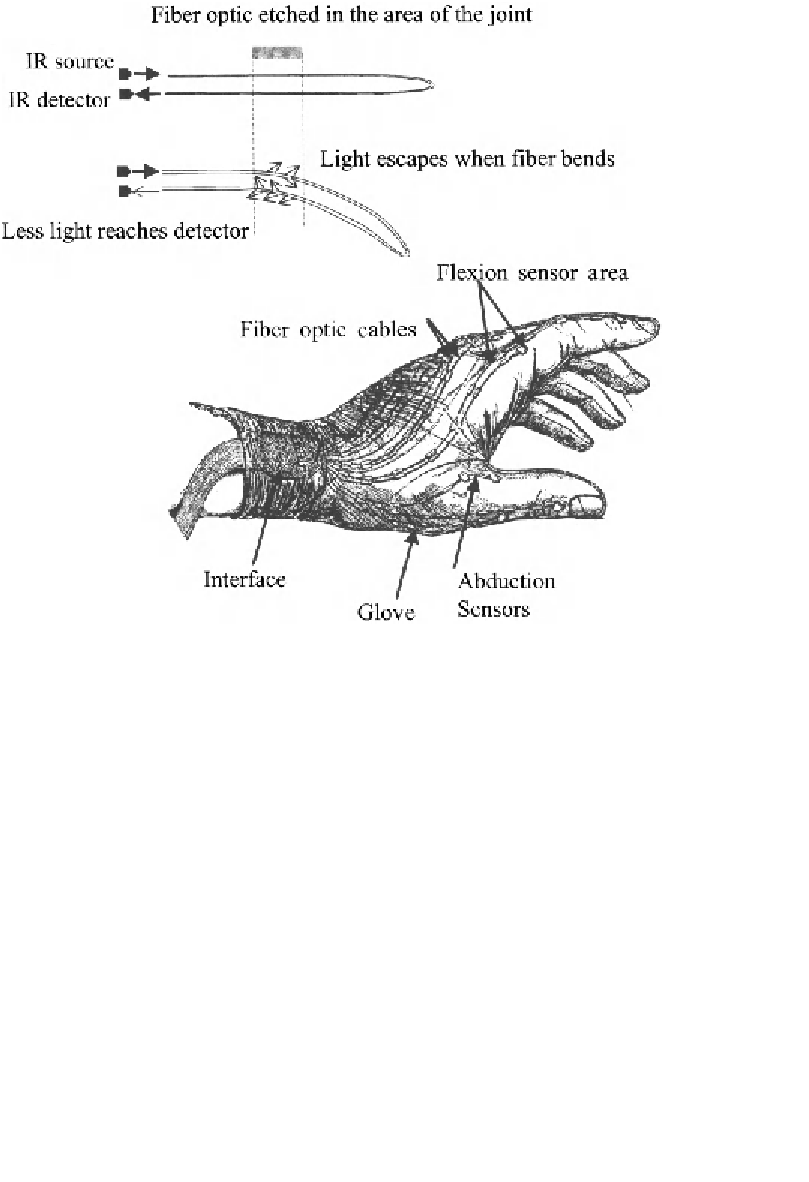Biomedical Engineering Reference
In-Depth Information
Figure 3.4
Construction and operation of a glove transducer to measure angular dis-
placements of the fingers. Transducer is a loop of fiber-optic cable; the amount of
light returning to the detector decreases with increased finger flexion. Each cable is
calibrated for angular displacement versus detected light intensity. (Courtesy of the
Ergonomics Laboratory, Department of Kinesiology, University of Waterloo, Waterloo,
Ont. Canada.)
about
a
t
or
a
unless a triaxial accelerometer is used. Such a 3D transducer is
nothing more than three individual accelerometers mounted at right angles to
each other, each one then reacting to the orthogonal component acting along
its axis. Even with a triaxial accelerometer mounted on a limb, there can be
problems because of limb rotation, as indicated in Figure 3.6. In both cases,
the leg is accelerating in the same
absolute
direction, as indicated by vector
a
. The measured acceleration component
a
n
is quite different in each case.
Thus, the accelerometer is limited to those movements whose direction in
space does not change drastically or to special contrived movements, such as
horizontal flexion of the forearm about a fixed elbow joint.










Search WWH ::

Custom Search